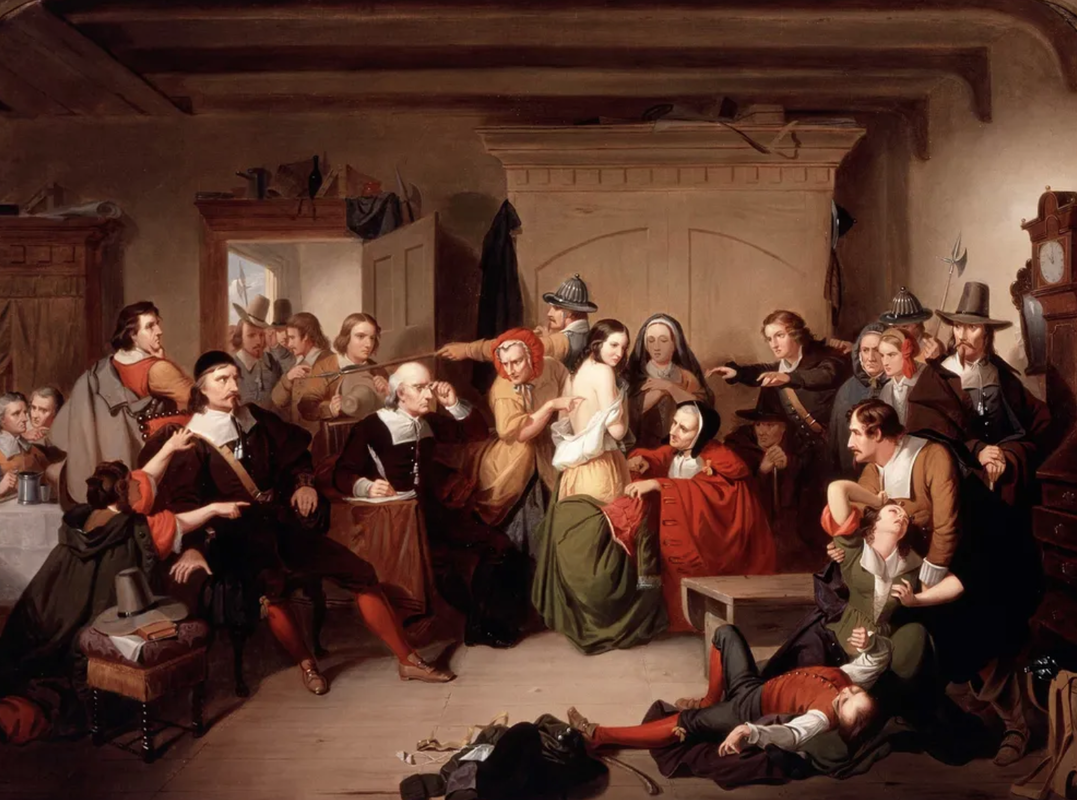|
In the annals of American and colonial history, the Salem Witch Trials of 1692 provide a disturbing and gory juncture demanding of our attention. To fathom the depths of this enigma, we must journey through the three most significant facets that ignited the witch hysteria, substantiated by historical evidence, statistics, and poignant quotations. 1. A Cauldron of Fear and Superstition: The first and foremost cause of the Salem Witch Trials was the potent brew of fear and superstition that simmered in 17th-century New England. Puritan settlers, seeking religious freedom in the New World, brought with them a stern faith that saw Satan as a constant, malevolent presence. They believed that any deviation from their strict interpretation of Christianity could open the door to diabolical influence. This prevailing fear of the supernatural, combined with their ardent religious convictions, created a volatile atmosphere in which any unexplained event, illness, or misfortune was viewed with suspicion. Historian Richard Godbeer poignantly describes the context, stating, "Puritans... believed in a world filled with supernatural forces." This belief was deeply ingrained in the Puritan psyche, setting the stage for a witchcraft panic of unprecedented proportions. 2. The Spark of Hysteria: The spark that ignited the Salem Witch Trials can be traced to a seemingly innocuous incident in the winter of 1691-1692. A group of young girls, including Elizabeth Parris and Abigail Williams, began experiencing strange and unexplained physical and behavioral symptoms. Their erratic fits and screams baffled the community, and the local physician, unable to diagnose a medical cause, suggested the possibility of witchcraft. These girls soon accused Tituba, a slave woman from Barbados, of practicing witchcraft and bewitching them. Tituba's confession, possibly made under duress, set off a chain reaction of accusations against other individuals, snowballing into a full-blown witch hunt. The statistics tell a chilling tale - over 200 people were accused of witchcraft, 30 were found guilty, and 19 were hanged, while one man was pressed to death with heavy stones. The infamous words of Cotton Mather, a prominent Puritan minister of the time, echoed through the trials: "The Devil... is come down in great wrath." These words not only encapsulated the prevailing sentiment but also fueled the hysteria that would grip Salem. 3. Social, Religious, and Economic Turbulence: Beneath the surface of the witch trials lay a cauldron of social, religious, and economic tensions that were festering in Salem. The village was divided into two distinct factions: Salem Village (present-day Danvers), where most of the accusers lived, and Salem Town (present-day Salem), which was wealthier and more established. The statistics reveal a striking pattern - a significant portion of the accused hailed from Salem Village, the epicenter of the hysteria. Historian Paul Boyer suggests that the trials were "part of a social conflict within the town" exacerbated by these tensions. Accusations of witchcraft provided a convenient outlet for longstanding grievances and rivalries. Accusers saw it as an opportunity to settle scores and eliminate rivals. Additionally, the trials highlighted the power dynamics within the community. Accusations were often directed at those on the fringes of society—outsiders, women, and people with perceived eccentricities. This further deepened the divides within Salem, as those in positions of authority sought to maintain control. The Salem Witch Trials are a haunting reminder of the fragility of reason and justice when fear, superstition, and social tensions run rampant. The combination of a deeply religious and fearful community, the spark of accusations by afflicted girls, and the underlying social, religious, and economic turmoil created a perfect storm of hysteria. In the words of Judge Samuel Sewall, who later expressed remorse for his role in the trials, "God be merciful to me... as I was mistaken, I desire to lie in the dust and earnestly beg forgiveness of God." As we reflect on this dark chapter in history, we must remember the lessons it imparts about the importance of reason, justice, and the preservation of civil liberties. The Salem Witch Trials serve as a stark cautionary tale, a reminder that even the most devout communities are not immune to the dangers of irrationality and intolerance. Written by Versus History Resident Blogger Martha Fitzpatrick of Delaware, USA.
0 Comments
Leave a Reply. |
Categories
All
Archives
April 2024
|

 RSS Feed
RSS Feed